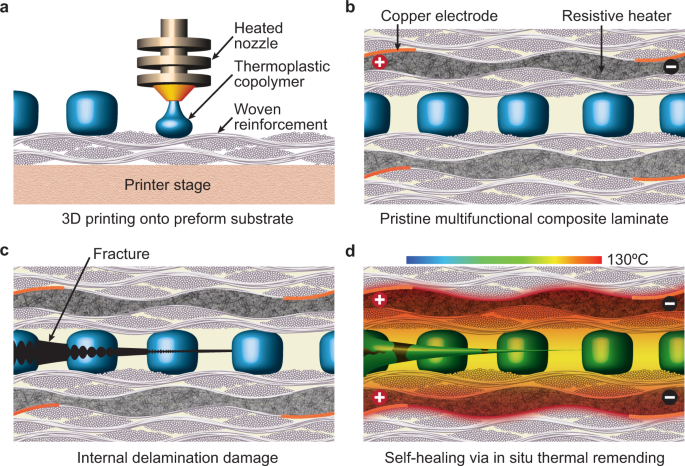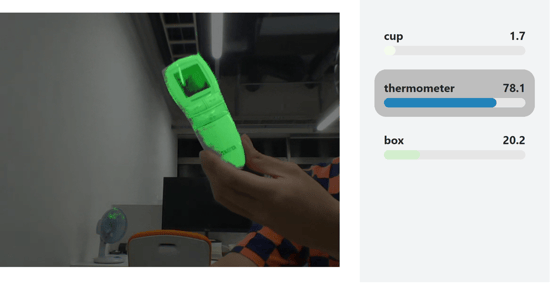2022-10-31 ノースカロライナ州立大学(NCState)
積層複合材は、ガラス繊維や炭素繊維などの繊維強化材を何層にも重ねて接着して作られている。損傷は、これらの層を接着している「接着剤」が強化材から剥がれ始める。
研究チームは、熱可塑性の治癒剤のパターンを補強材に3Dプリントすることで、この問題に対処した。さらに、薄い「ヒーター」層を複合材料に埋め込んだ。電流を流すと、ヒーター層が温まる。すると、ヒーリング剤が溶けて、複合材料内の亀裂や微小亀裂に流れ込み、修復される。
この新技術の利点は、航空機の翼に組み込むことができれば、航空機が地上にいるときに翼の氷を取り除くための化学薬品や、飛行中の氷を取り除くための化学薬品を使用しなくてすむようになる。
<関連情報>
- https://news.ncsu.edu/2022/10/new-self-healing-materials/
- https://www.nature.com/articles/s41467-022-33936-z
熱可逆的エンタングルメントを用いた構造用複合材料の長期その場自己修復の研究 Prolonged in situ self-healing in structural composites via thermo-reversible entanglement
Alexander D. Snyder,Zachary J. Phillips,Jack S. Turicek,Charles E. Diesendruck,Kalyana B. Nakshatrala & Jason F. Patrick
Nature Communications Published:31 October 2022
DOI:https://doi.org/10.1038/s41467-022-33936-z

Abstract
Natural processes continuously degrade a material’s performance throughout its life cycle. An emerging class of synthetic self-healing polymers and composites possess property-retaining functions with the promise of longer lifetimes. But sustained in-service repair of structural fiber-reinforced composites remains unfulfilled due to material heterogeneity and thermodynamic barriers in commonly cross-linked polymer-matrix constituents. Overcoming these inherent challenges for mechanical self-recovery is vital to extend in-service operation and attain widespread adoption of such bioinspired structural materials. Here we transcend existing obstacles and report a fiber-composite capable of minute-scale and prolonged in situ healing — 100 cycles: an order of magnitude higher than prior studies. By 3D printing a mendable thermoplastic onto woven glass/carbon fiber reinforcement and co-laminating with electrically resistive heater interlayers, we achieve in situ thermal remending of internal delamination via dynamic bond re-association. Full fracture recovery occurs below the glass-transition temperature of the thermoset epoxy-matrix composite, thus preserving stiffness during and after repair. A discovery of chemically driven improvement in thermal remending of glass- over carbon-fiber composites is also revealed. The marked lifetime extension offered by this self-healing strategy mitigates costly maintenance, facilitates repair of difficult-to-access structures (e.g., wind-turbine blades), and reduces part replacement, thereby benefiting economy and environment.



